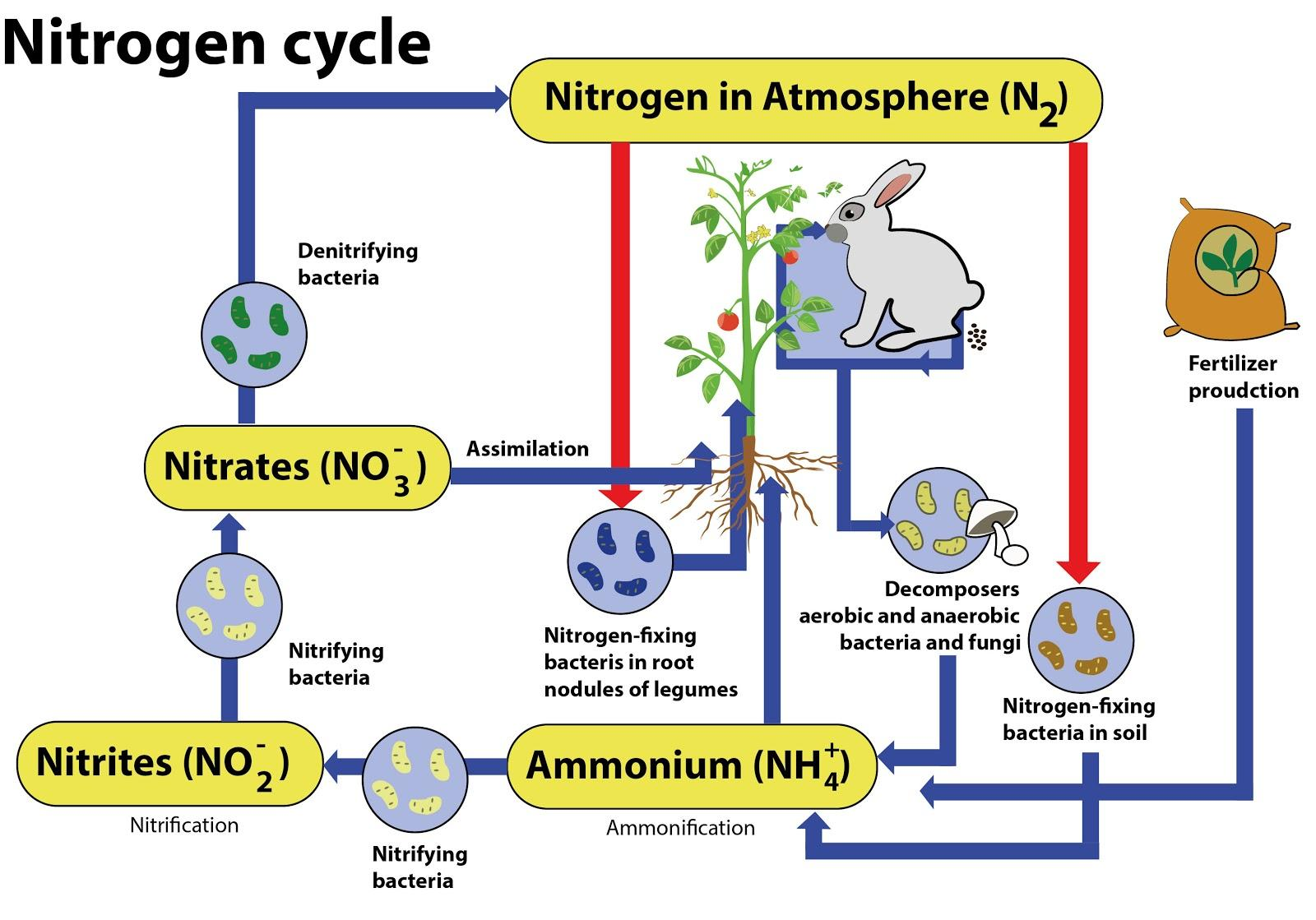
How do most plants get the nitrogen they need?
Answer
435.6k+ views
Hint: The process that involves the assimilation and fixation of nitrogen that together constitute to form a nitrogen cycle. They help in absorbing the nitrogen from the plants. It changes the nitrogen from one form to another for easy absorption.
Complete answer:
The Formation of different organic nitrogen compounds from inorganic nitrogen compounds is called Nitrogen assimilation. The process of nitrogen fixation involves the conversion of nitrogen that is obtained from the air to ammonia found in the soil. For this certain diazotrophic microorganisms are required that include archaea and bacteria, especially azotobacter. It occurs as a symbiotic relationship in the root nodules of leguminous plants and the bacteria. The German agronomist and the Dutch Hermann Hellriegel and microbiologist Martinus Beijerinck were the first ones to describe respectively.
The fixation of nitrogen is done by the process of lightning taking place in the environment or by the exposure of ultraviolet rays, resulting in the formation of different forms of nitrogen that constitutes nitrites, ammonia, and nitrates with the help of microorganisms present in the soil. In excess of $90\%$ of the all-natural cycle is affected by them. The nitrogen-fixing microorganisms are found to be usually of two types: the first one is non symbiotic bacteria that are free-living in nature, examples are Anabaena, cyanobacteria also called blue-green algae, and Nostoc along with several genera such as Beijerinckia, Clostridium, and Azotobacter, while the second one is symbiotic bacteria that is mutualistic in nature, the examples are Azospirillum which is found in the cereal grasses and Rhizobium which is found in the roots of the leguminous plants.

Note:
The bacteria responsible for performing the process of nitrogen fixation in various plants is the Rhizobium, during the process of nitrogen fixation to express their genes they require a host. The shape of the Rhizobium bacteria is found to be rod-shaped, gram-negative in nature. It is found to be a motile bacterium. In 1889 the Rhizobium bacteria was first identified and was called Rhizobium leguminosarum.
Complete answer:
The Formation of different organic nitrogen compounds from inorganic nitrogen compounds is called Nitrogen assimilation. The process of nitrogen fixation involves the conversion of nitrogen that is obtained from the air to ammonia found in the soil. For this certain diazotrophic microorganisms are required that include archaea and bacteria, especially azotobacter. It occurs as a symbiotic relationship in the root nodules of leguminous plants and the bacteria. The German agronomist and the Dutch Hermann Hellriegel and microbiologist Martinus Beijerinck were the first ones to describe respectively.
The fixation of nitrogen is done by the process of lightning taking place in the environment or by the exposure of ultraviolet rays, resulting in the formation of different forms of nitrogen that constitutes nitrites, ammonia, and nitrates with the help of microorganisms present in the soil. In excess of $90\%$ of the all-natural cycle is affected by them. The nitrogen-fixing microorganisms are found to be usually of two types: the first one is non symbiotic bacteria that are free-living in nature, examples are Anabaena, cyanobacteria also called blue-green algae, and Nostoc along with several genera such as Beijerinckia, Clostridium, and Azotobacter, while the second one is symbiotic bacteria that is mutualistic in nature, the examples are Azospirillum which is found in the cereal grasses and Rhizobium which is found in the roots of the leguminous plants.

Note:
The bacteria responsible for performing the process of nitrogen fixation in various plants is the Rhizobium, during the process of nitrogen fixation to express their genes they require a host. The shape of the Rhizobium bacteria is found to be rod-shaped, gram-negative in nature. It is found to be a motile bacterium. In 1889 the Rhizobium bacteria was first identified and was called Rhizobium leguminosarum.
Recently Updated Pages
The correct geometry and hybridization for XeF4 are class 11 chemistry CBSE

Water softening by Clarks process uses ACalcium bicarbonate class 11 chemistry CBSE

With reference to graphite and diamond which of the class 11 chemistry CBSE

A certain household has consumed 250 units of energy class 11 physics CBSE

The lightest metal known is A beryllium B lithium C class 11 chemistry CBSE

What is the formula mass of the iodine molecule class 11 chemistry CBSE

Trending doubts
State the laws of reflection of light

Arrange Water ethanol and phenol in increasing order class 11 chemistry CBSE

One Metric ton is equal to kg A 10000 B 1000 C 100 class 11 physics CBSE

Difference Between Prokaryotic Cells and Eukaryotic Cells

A mixture of o nitrophenol and p nitrophenol can be class 11 chemistry CBSE

How do I convert ms to kmh Give an example class 11 physics CBSE




